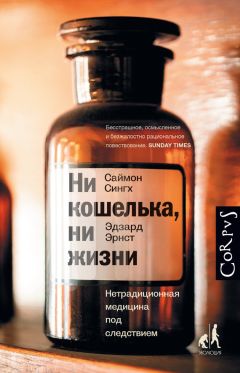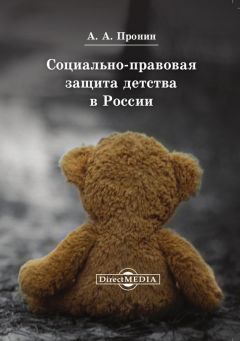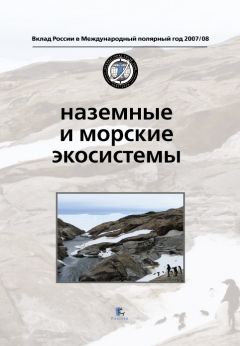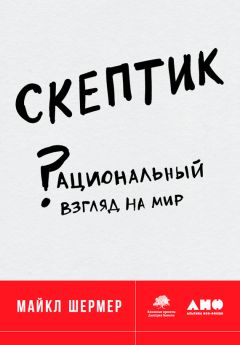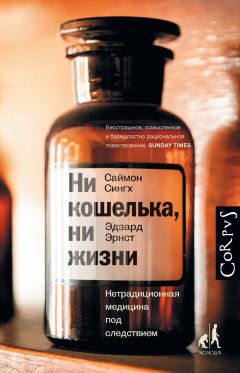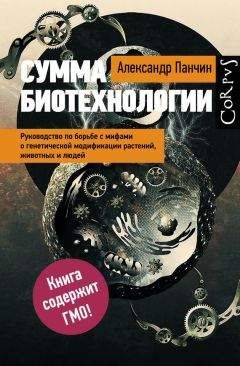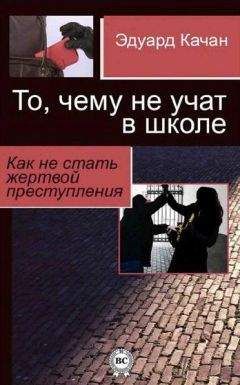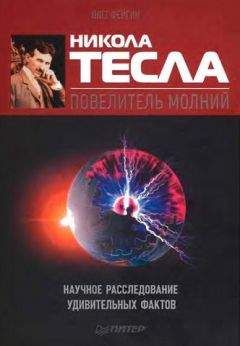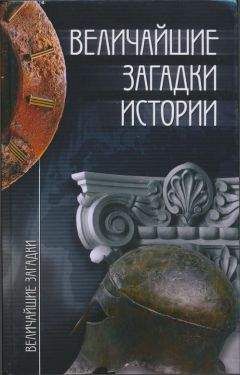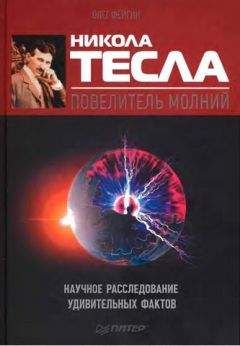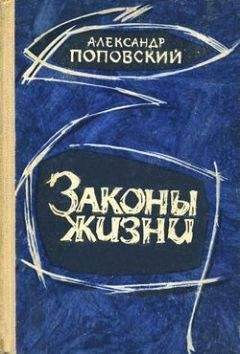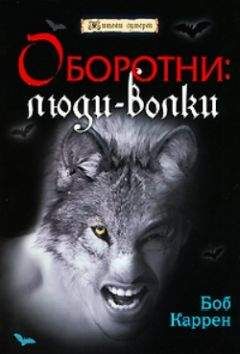Александр Панчин - Защита от темных искусств. Путеводитель по миру паранормальных явлений

Все авторские права соблюдены. Напишите нам, если Вы не согласны.
Описание книги "Защита от темных искусств. Путеводитель по миру паранормальных явлений"
Описание и краткое содержание "Защита от темных искусств. Путеводитель по миру паранормальных явлений" читать бесплатно онлайн.
«Защита от темных искусств» – увлекательный научно-популярный рассказ о паранормальном. Это вторая книга биолога Александра Панчина, лауреата премии «Просветитель» за «Сумму биотехнологии». Здесь описаны результаты сотен научных исследований, объясняющих, почему люди охотно верят, например, в мистических существ, экстрасенсов, астрологию и магию. Это своего рода практическое руководство, посвященное научному подходу к сверхъестественному. «Защита от темных искусств» поможет читателю не стать жертвой обмана и самообмана.
59
Corlett P. R. et al.: Capgras syndrome induced by ketamine in a healthy subject. Biol Psychiatry 2010, 68 (1): e1–2.
60
Thiel C. M. et al.: When a loved one feels unfamiliar: a case study on the neural basis of Capgras delusion. Cortex 2014, 52: 75–85.
61
Barton J. J. et al.: Lesions of the fusiform face area impair perception of facial configuration in prosopagnosia. Neurology 2002, 58 (1): 71–78.
62
Brighetti G. et al.: “Far from the heart far from the eye”: evidence from the Capgras delusion. Cogn Neuropsychiatry 2007, 12 (3): 189–197.
Bauer R. M.: Autonomic recognition of names and faces in prosopagnosia: a neuropsychological application of the Guilty Knowledge Test. Neuropsychologia 1984, 22 (4): 457–469.
63
Ellis H. D., Young A. W.: Accounting for delusional misidentifications. Br J Psychiatry 1990, 157: 239–248.
64
Ellis H. D., Lewis M. B.: Capgras delusion: a window on face recognition. Trends Cogn Sci 2001, 5 (4): 149–156.
65
Darby R. R., Caplan D.: “Cat-gras” delusion: a unique misidentification syndrome and a novel explanation. Neurocase 2016, 22 (2): 251–256.
66
Lewis M. et al.: Autonomic responses to familiar faces without autonomic responses to familiar voices: evidence for voice-specific Capgras delusion. Cogn Neuropsychiatry 2001, 6 (3): 217–228.
67
van Lommel P. et al.: Near-death experience in survivors of cardiac arrest: a prospective study in the Netherlands. Lancet 2001, 358 (9298): 2039–2045.
68
Lempert T. et al.: Syncope and near-death experience. Lancet 1994, 344 (8925): 829–830.
Lempert T. et al.: Syncope: a videometric analysis of 56 episodes of transient cerebral hypoxia. Ann Neurol 1994, 36 (2): 233–237.
69
Klemenc-Ketis Z. et al.: The effect of carbon dioxide on near-death experiences in out-of-hospital cardiac arrest survivors: a prospective observational study. Crit Care 2010, 14 (2): R56.
70
Blanke O. et al.: Stimulating illusory own-body perceptions. Nature 2002, 419 (6904): 269–270.
71
Blanke O., Arzy S.: The out-of-body experience: disturbed self-processing at the temporo-parietal junction. Neuroscientist 2005, 11 (1): 16–24.
72
Ekstrom A. D. et al.: Cellular networks underlying human spatial navigation. Nature 2003, 425 (6954): 184–188.
73
Matsumura N. et al.: Spatial- and task-dependent neuronal responses during real and virtual translocation in the monkey hippocampal formation. J Neurosci 1999, 19 (6): 2381–2393.
74
O’Keefe J., Dostrovsky J.: The hippocampus as a spatial map. Preliminary evidence from unit activity in the freely-moving rat. Brain Res 1971, 34 (1): 171–175.
75
Burgess N., O’Keefe J.: Neural representations in human spatial memory. Trends Cogn Sci 2003, 7 (12): 517–519.
76
Hartley T. et al.: Space in the brain: how the hippocampal formation supports spatial cognition. Philos Trans R Soc Lond B Biol Sci 2014, 369 (1635): 20120510.
77
Hafting T. et al.: Microstructure of a spatial map in the entorhinal cortex. Nature 2005, 436 (7052): 801–806.
78
Kunz L. et al.: Reduced grid-cell-like representations in adults at genetic risk for Alzheimer’s disease. Science 2015, 350 (6259): 430–433.
79
Parnia S. et al.: AWARE-AWAreness during REsuscitation – a prospective study. Resuscitation 2014, 85 (12): 1799–1805.
80
Панчин А.: Апофения. 2014. www.smashwords.com/books/view/461313
81
Manford M., Andermann F.: Complex visual hallucinations. Clinical and neurobiological insights. Brain 1998, 121 (Pt 10): 1819–1840.
82
Azevedo F. A. et al.: Equal numbers of neuronal and nonneuronal cells make the human brain an isometrically scaled-up primate brain. J Comp Neurol 2009, 513 (5): 532–541.
83
Перевод Н. Цветкова. – Здесь и далее прим. ред.
84
Mattelaer J. J.: The phallus tree: a medieval and renaissance phenomenon. J Sex Med 2010, 7 (2 Pt 1): 846–851.
85
Mattelaer J. J., Jilek W.: Koro – the psychological disappearance of the penis. J Sex Med 2007, 4 (5): 1509–1515.
86
Chowdhury A. N. et al.: Puppy pregnancy in humans: a culture-bound disorder in rural West Bengal, India. Int J Soc Psychiatry 2003, 49 (1): 35–42.
87
Germiniani F. M. et al.: Tourette’s syndrome: from demonic possession and psychoanalysis to the discovery of gene. Arq Neuropsiquiatr 2012, 70 (7): 547–549.
88
Kurlan R.: Clinical practice. Tourette’s Syndrome. N Engl J Med 2010, 363 (24): 2332–2338.
89
Murray E. D. et al.: The role of psychotic disorders in religious history considered. J Neuropsychiatry Clin Neurosci 2012, 24 (4): 410–426.
90
Devinsky O., Lai G.: Spirituality and religion in epilepsy. Epilepsy Behav 2008, 12 (4): 636–643.
Kemp S.: Modern myth and medieval madness: views of mental illness in the European Middle Ages and Renaissance. NZ J Psychol 1985, 14 (1): 1–8.
91
Sherman L., Zimmerman M.: Ergotism and its effects on society and religion. J Nutr Immunol 1994, 2 (3): 127–136.
92
Kemp S.: Modern myth and medieval madness: views of mental illness in the European Middle Ages and Renaissance. NZ J Psychol 1985, 14 (1): 1–8.
93
Tajima-Pozo K. et al.: Practicing exorcism in schizophrenia. BMJ Case Rep 2011, 2011.
94
Basedow H.: The Australian Aboriginal. 1925.
95
Cannon W. B.: “Voodoo” death. American Anthropologist, 1942; 44 (new series): 169–181. Am J Public Health 2002, 92 (10): 1593–1596; discussion 1594–1595.
96
Milton G. W.: Self-willed death or the bone-pointing syndrome. Lancet 1973, 1 (7817): 1435–1436.
97
Milton G. W.: Self-willed death or the bone-pointing syndrome. Lancet 1973, 1 (7817): 1435–1436.
98
Appels C. W., Bolk J. H.: Sudden death after emotional stress: a case history and literature review. Eur J Intern Med 2009, 20 (4): 359–361.
99
Vlastelica M.: Emotional stress as a trigger in sudden cardiac death. Psychiatr Danub 2008, 20 (3): 411–414.
100
Hlavaty L., Sung L.: Applying the principles of homicide by heart attack. Am J Forensic Med Pathol 2016, 37 (2): 112–117.
101
Nyegaard M. et al.: Mutations in calmodulin cause ventricular tachycardia and sudden cardiac death. Am J Hum Genet 2012, 91 (4): 703–712.
102
Wilbert-Lampen U. et al.: Cardiovascular events during World Cup soccer. N Engl J Med 2008, 358 (5): 475–483.
103
Meisel S. R. et al.: Effect of Iraqi missile war on incidence of acute myocardial infarction and sudden death in Israeli civilians. Lancet 1991, 338 (8768): 660–661.
104
Bergovec M. et al.: Acute myocardial infarction among civilians in Zagreb city area. Lancet 1992, 339 (8788): 303.
105
Suzuki S. et al.: Hanshin-Awaji earthquake as a trigger for acute myocardial infarction. Am Heart J 1997, 134 (5 Pt 1): 974–977.
106
Brown D. L.: Disparate effects of the 1989 Loma Prieta and 1994 Northridge earthquakes on hospital admissions for acute myocardial infarction: importance of superimposition of triggers. Am Heart J 1999, 137 (5): 830–836.
107
Christakis N. A., Allison P. D.: Mortality after the hospitalization of a spouse. N Engl J Med 2006, 354 (7): 719–730.
108
Witthoft M., Rubin G. J.: Are media warnings about the adverse health effects of modern life self-fulfilling? An experimental study on idiopathic environmental intolerance attributed to electromagnetic fields (IEI-EMF). J Psychosom Res 2013, 74 (3): 206–212.
109
Richter C. P.: On the phenomenon of sudden death in animals and man. Psychosom Med 1957, 19 (3): 191–198.
110
Skinner J. E. et al.: Modification of ventricular fibrillation latency following coronary artery occlusion in the conscious pig. Circulation 1975, 51 (4): 656–667.
111
Панчин А.: Нейробиологические основы мифов о паранормальном. 2016. www.youtube.com/watch?v=d1-j8u5A_YQ
112
Приводится в переводе А. Ганзен.
113
Соболев Ф.: Я и другие. 1971. www.youtube.com/watch?v=MoeQ3I7BRpY
114
Перевод Н. Малиновской.
115
Loftus E.: How reliable is your memory? 2013. www.ted.com/talks/elizabeth_loftus_the_fiction_of_memory
116
Innocence Project. www.innocenceproject.org
117
Simons D. J., Chabris C. F.: Gorillas in our midst: sustained inattentional blindness for dynamic events. Perception 1999, 28 (9): 1059–1074; www.youtube.com/watch?v=vJG698U2Mvo
118
Loftus E.: Reconstruction of automobile destruction: an example of interaction between language and memory. J Verbal Learning Verbal Behav 1974, 13 (5): 585–589.
119
Loftus E. et al.: Semantic integration of verbal information into a visual memory. J Exp Psychol Hum Learn 1978, 4 (1): 19–31.
120
Loftus E. F., Pickrell J. E.: The formation of false memories. Psychiatr Ann 1995, 25: 720–725.
121
Porter S. et al.: The nature of real, implanted, and fabricated memories for emotional childhood events: implications for the recovered memory debate. Law Hum Behav 1999, 23 (5): 517–537.
122
Hyman I. E. et al.: False memories of childhood experiences. Appl Cogn Psychol 1999, 9 (3): 181–197.
123
Lindsay D. S. et al.: True photographs and false memories. Psychol Sci 2004, 15 (3): 149–154.
124
Loftus E. F.: The reality of repressed memories. Am Psychol 1993, 48 (5): 518–537.
125
Berkowitz S. R. et al.: Pluto behaving badly: false beliefs and their consequences. Am J Psychol 2008, 121 (4): 643–660.
126
Mazzoni G. et al.: Changing beliefs about implausible autobiographical events. J Exp Psychol Hum Learn 2001, 7 (1): 51–59.
127
Otgaar H. et al.: Abducted by a UFO: prevalence information affects young children’s false memories for an implausible event. Appl Cognit Psychol 2009, 23 (1): 115–125.
128
McNally R.: Explaining “memories” of space alien abduction and past lives: an experimental psychopathology approach. J Exp Psychopathol 2012, 3 (1): 2–16.
129
Gallo D., Lampinen J.: Three Pillars of False Memory Prevention: Orientation, Evaluation, and Corroboration. 2016.
130
Ramirez S. et al.: Creating a false memory in the hippocampus. Science 2013, 341 (6144): 387–391.
131
Ramirez S. et al.: Activating positive memory engrams suppresses depression-like behaviour. Nature 2015, 522 (7556): 335–339.
132
Thomason S.: Xenoglossy. 1995.
133
Samarin W.: Tongues of Men and Angels: The Religious Language of Pentecostalism. 1972.
134
Перевод А. Кистяковского.
135
Brown A. S.: A review of the déjà vu experience. Psychol Bull 2003, 129 (3): 394–413.
Funkhouser A., Schredl M.: The frequency of déjà vu (déjà rêve) and the effects of age, dream recall frequency and personality factors. Int J Dream Res 2010, 3 (1): 60–64.
Подписывайтесь на наши страницы в социальных сетях.
Будьте в курсе последних книжных новинок, комментируйте, обсуждайте. Мы ждём Вас!
Похожие книги на "Защита от темных искусств. Путеводитель по миру паранормальных явлений"
Книги похожие на "Защита от темных искусств. Путеводитель по миру паранормальных явлений" читать онлайн или скачать бесплатно полные версии.
Мы рекомендуем Вам зарегистрироваться либо войти на сайт под своим именем.
Отзывы о "Александр Панчин - Защита от темных искусств. Путеводитель по миру паранормальных явлений"
Отзывы читателей о книге "Защита от темных искусств. Путеводитель по миру паранормальных явлений", комментарии и мнения людей о произведении.






